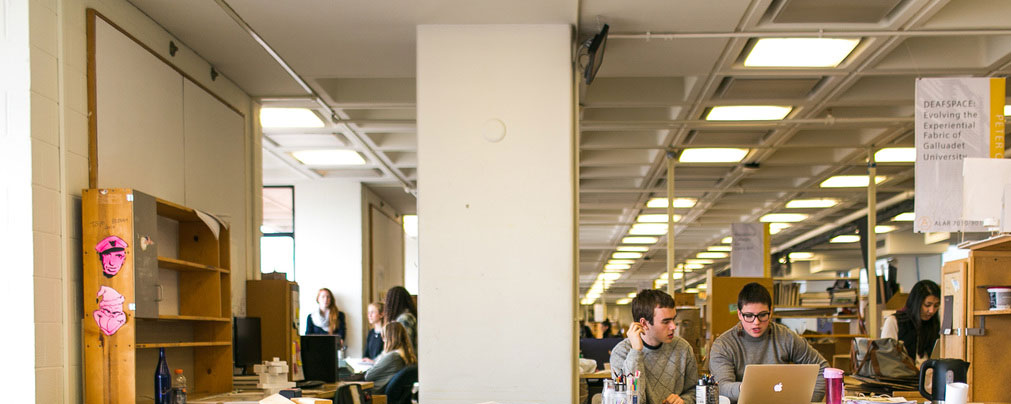Can Charlottesville’s Preston Avenue, a commercial corridor scarred by contentious urban renewal policies, become a more attractive home for businesses and residents?
Over the past two weeks, students in the University of Virginia’s School of Architecture have grappled with that question during the school’s fifth annual Vortex design workshop. Unique among American schools of design, the workshop brings together more than 300 undergraduate and graduate students and 30 faculty members across the school’s four disciplines – architecture, landscape architecture, urban and environmental planning and architectural history – to tackle a single area of focus within the local community.
This year, they were split into teams to consider how Preston Avenue – a half-mile stretch of four-lane, divided roadway connecting downtown Charlottesville with the more residential Venable neighborhood – could offer more appealing public spaces, become more pedestrian-friendly, improve public housing availlability and create a better atmosphere for businesses and residents alike.
Past Vortex projects have focused on the Belmont Bridge in downtown Charlottesville, an urban stretch of the Rivanna River, Route 29 North and Ivy Road.
The workshop – intended to conclude with a competition and awards ceremony on Jan. 24 – was interrupted by the arrival of Winter Storm Jonas, which unloaded nearly two feet of snow on the Charlottesville area. The ceremony was rescheduled for February, but that did not stop students from celebrating Vortex’s conclusion; they picked up snow shovels and went door-to-door, digging out residents of the same streets that they hope their designs will improve.
Vortex Finale: The Big Shovel from Anna Cai on Vimeo.
Before the storm, architecture students and faculty completed a walk-through of Preston Avenue, which owes its present-day environment to controversial urban renewal policies enacted in the 1960s. Though these policies sped vehicular traffic, they divided well-established neighborhoods and displaced primarily African-American and working-class residents.
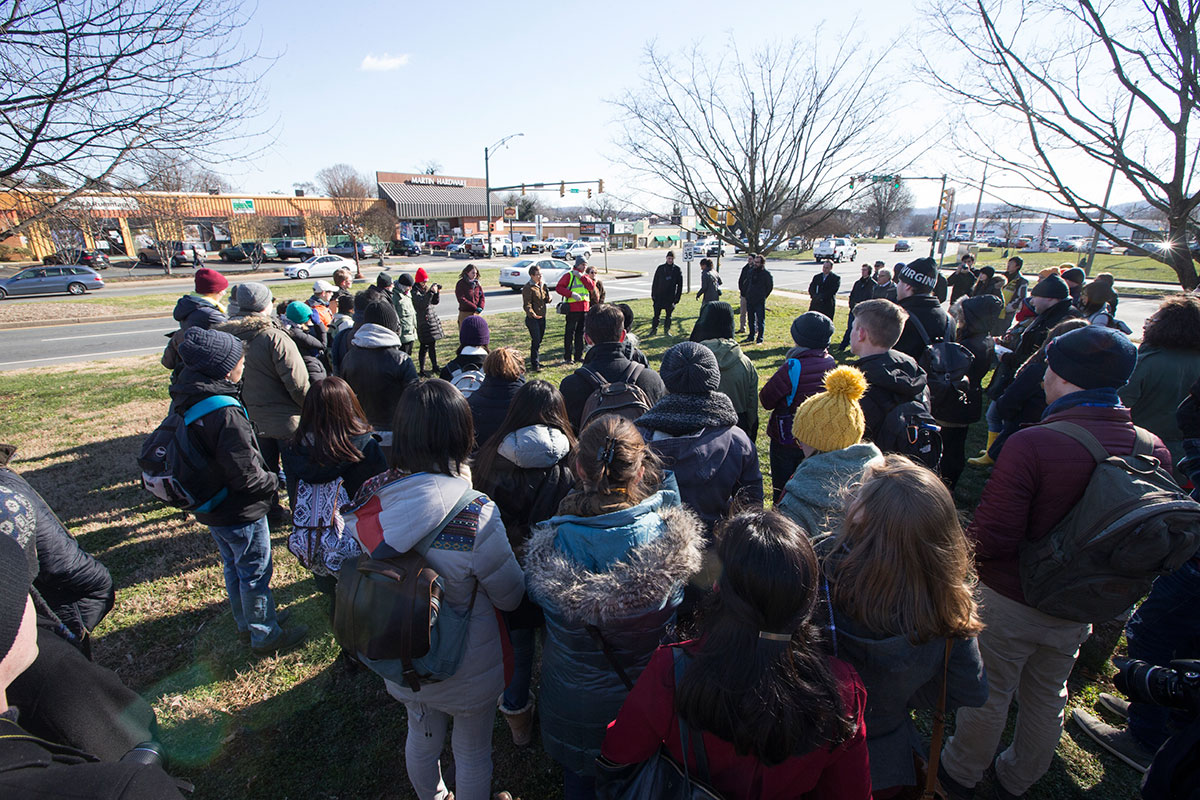
Students and faculty walked the Preston Avenue site to kickoff the Vortex workshop. (Photo by Dan Addison)
“One of the highlights of Vortex over the last five years is the opportunity for students and faculty to hear multiple and often conflicting perspectives on a site from members of the community,” Architecture Dean Elizabeth Meyer, pictured, told students at the Vortex kickoff meeting. “Preston Avenue might look like a relatively inconsequential suburban place, but we can see issues of power, class and race all connected to issues of topography.”
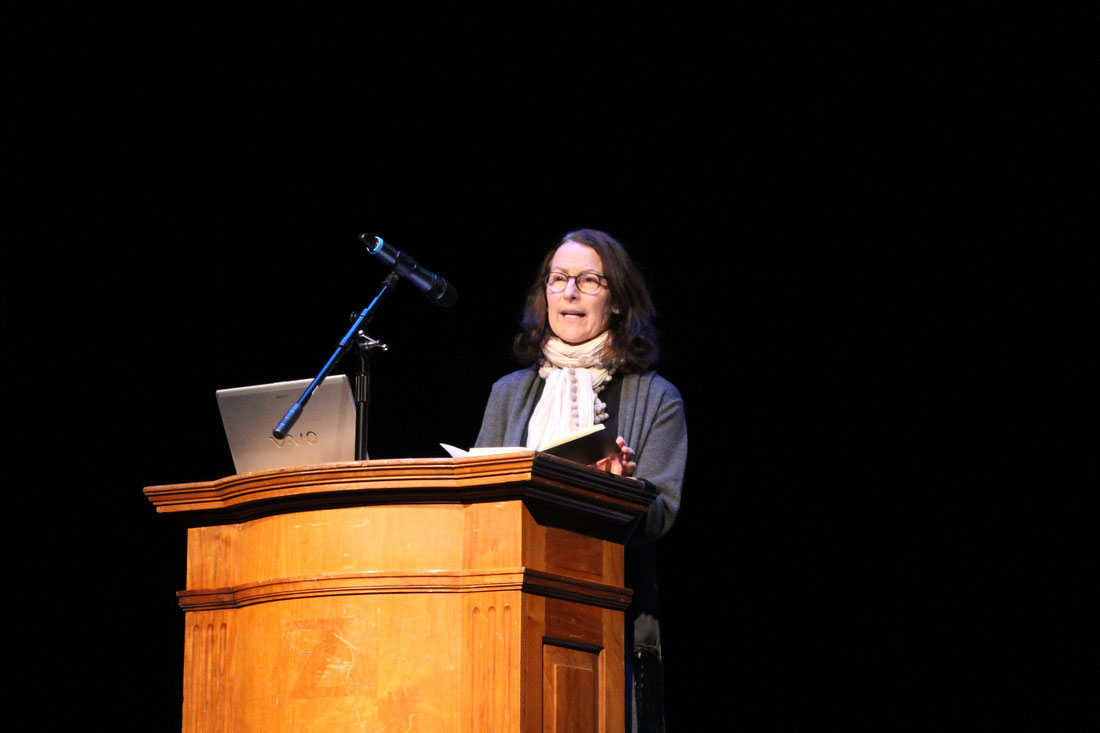
Architecture dean Elizabeth Meyer addresses students, reminding them of Preston Avenue’s heritage. (Photo contributed by Vortex Communications Team)
Meyer and others speaking at the kickoff meeting reminded students that Preston Avenue has been home to many industrial sites, such as the Coca-Cola bottling plant pictured below in a photo from the Albert and Shirley Small Special Collections Library.
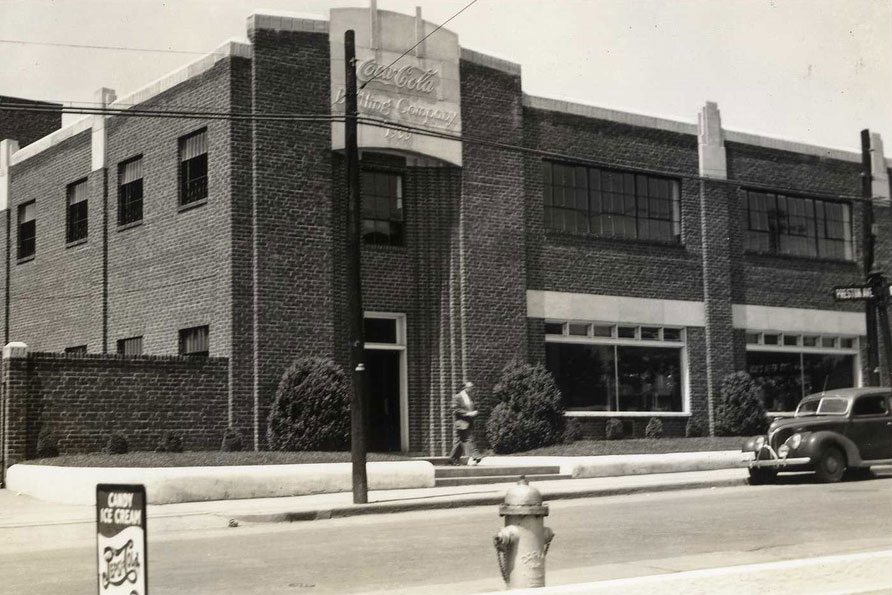
The Coca-Cola plant has been adapted many times and is now home to Timbercreek Market and Kardinal Hall Bocce & Beer Garden.
City Councilor Kathleen Galvin, an alumna of the School of Architecture, also spoke at the kickoff meeting, asking students to consider how Preston Avenue might become “an authentic, fair and healthy corridor that is accessible and inviting to everyone.”
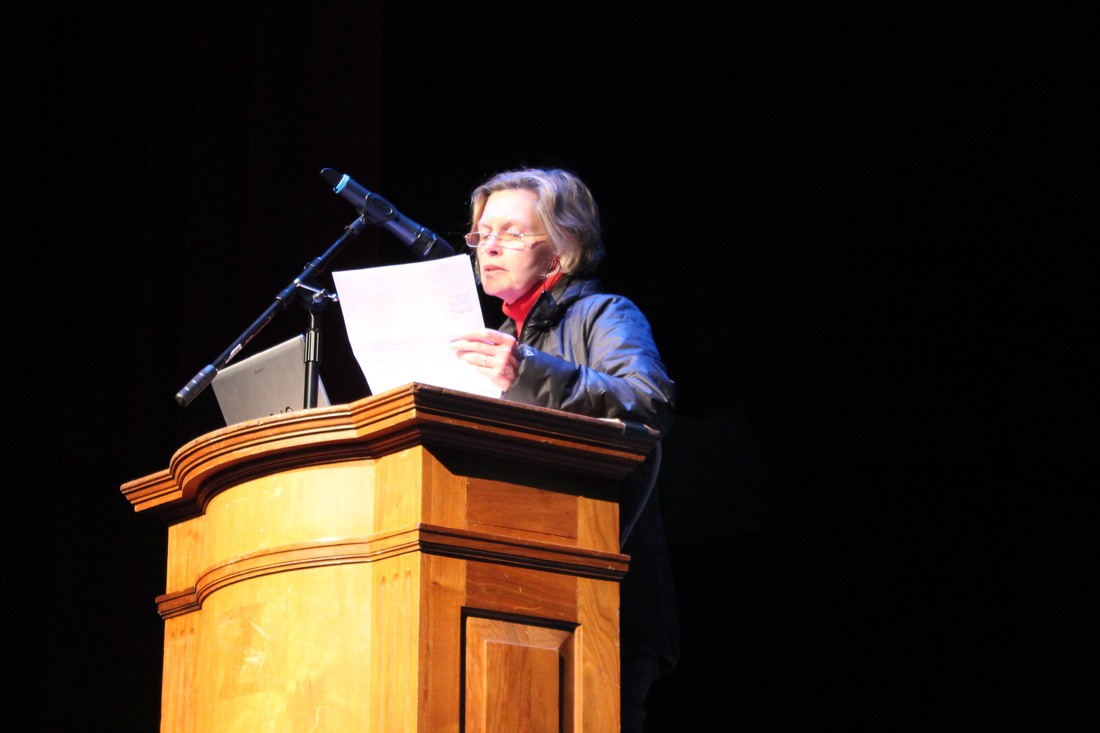
City Councilor Kathleen Gavin speaks at the kickoff meeting. (Photo contributed by Vortex Communications Team)
To answer Galvin’s charge, students and faculty split into 23 interdisciplinary teams, each charged with exploring a particular opportunity or strategy that could be implemented on Preston Avenue.
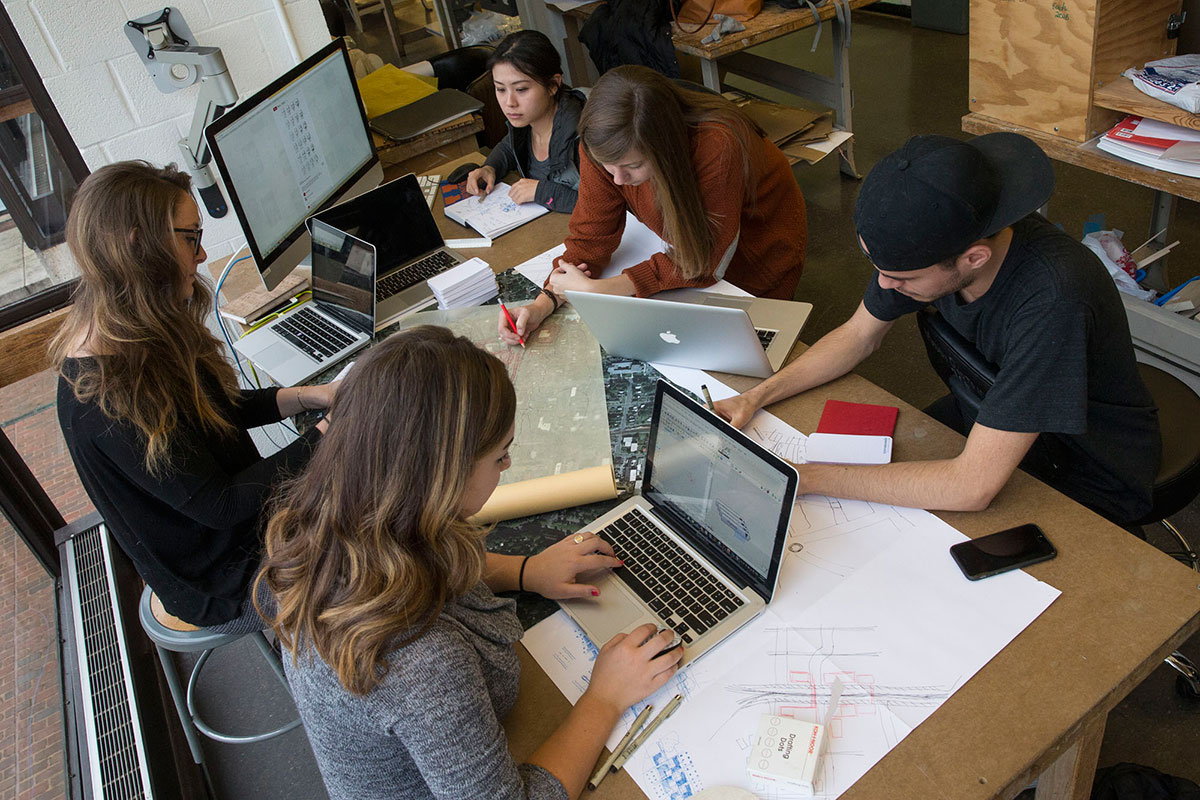
Sara Russomanno, McKenzie Rist, Yushan Du, Elizabeth Sinyard and Rosvel Bracho discuss their Vortex project.
Overall strategies were developed by Hrvoje Ngiric, a principal leader of njiric + arhiteckti in Zagreb, Croatia, and this year’s visiting Jacquelin T. Robertson Professor, who was charged with leading the Vortex workshop.
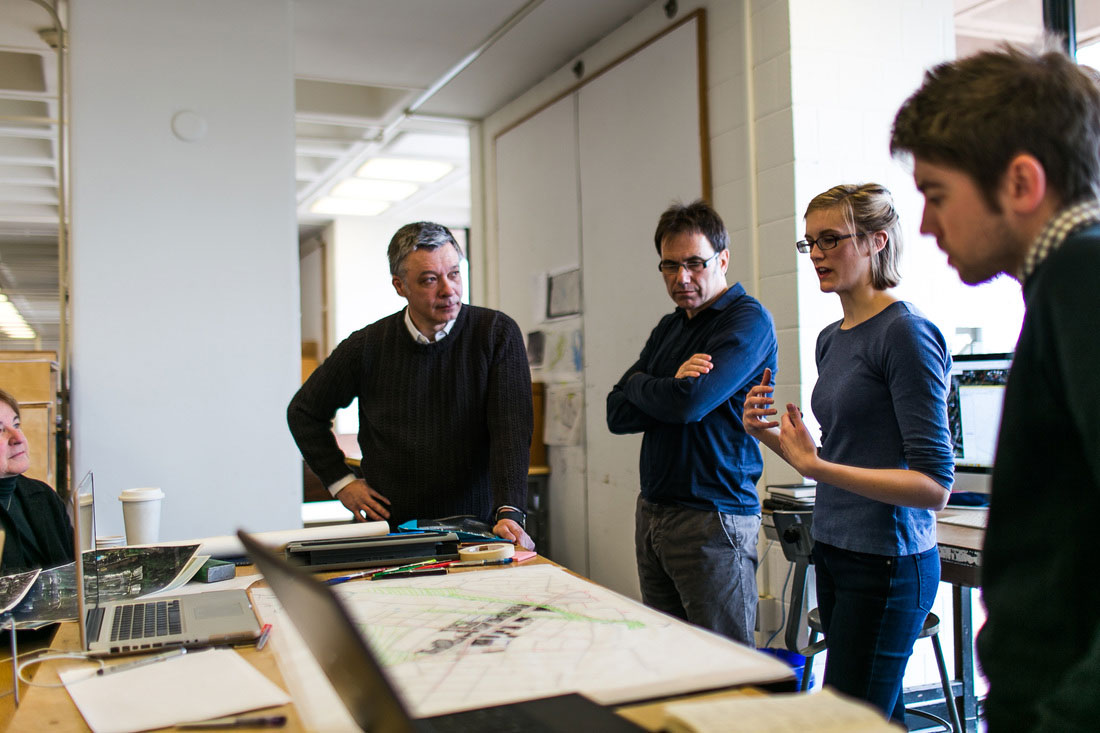
Above, Ngiric consults with a team of students and faculty as they develop their plans for Preston Avenue. (Photo contributed by Vortex Communications Team)
Teams consulted with Charlottesville officials, local design practitioners and School of Architecture alumni as they debated how to create better public spaces, integrate public housing or improve traffic flow on Preston Avenue.
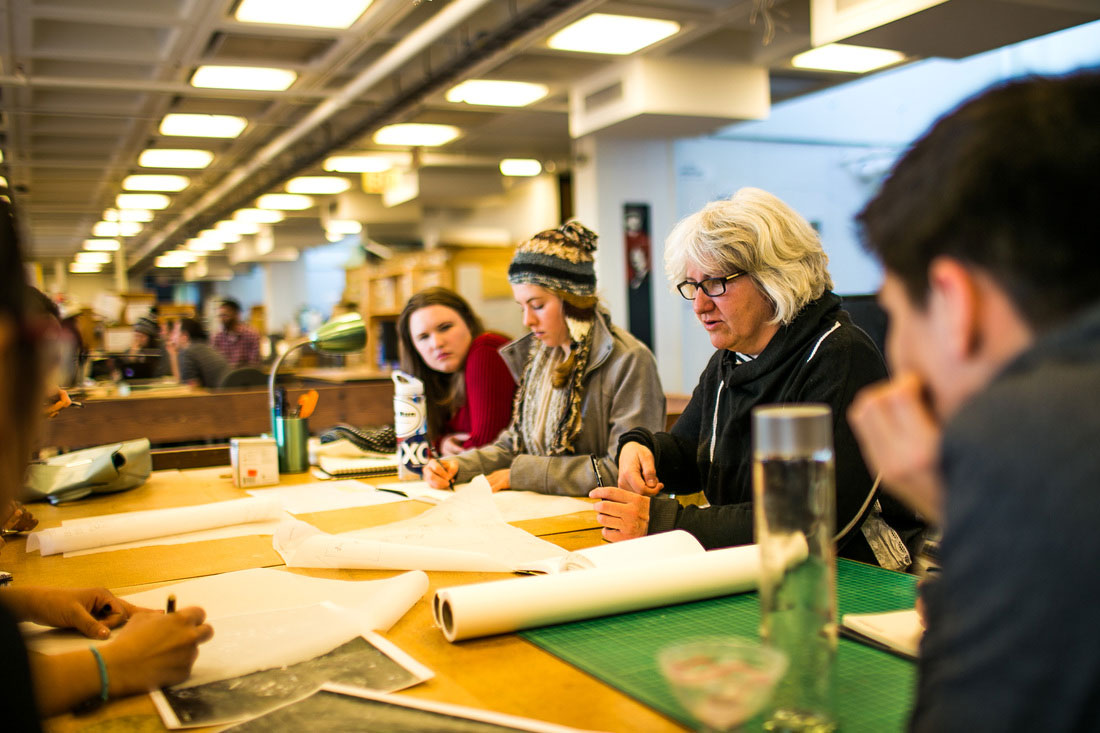
Before, during and after the snowstorm, teams gathered to work on their designs. (Photo contributed by Vortex Communications Team)
“Vortex is so collaborative, and I have met a lot of people that I would not have met otherwise,” said fourth-year architecture student Anna Cai, who leads the communication team for this year’s workshop. “In architecture, you are always going to be working with others who have different perspectives, so that is helpful. I also enjoy the sheer energy of Vortex. It really encapsulates the buzz behind creating something amazing.”
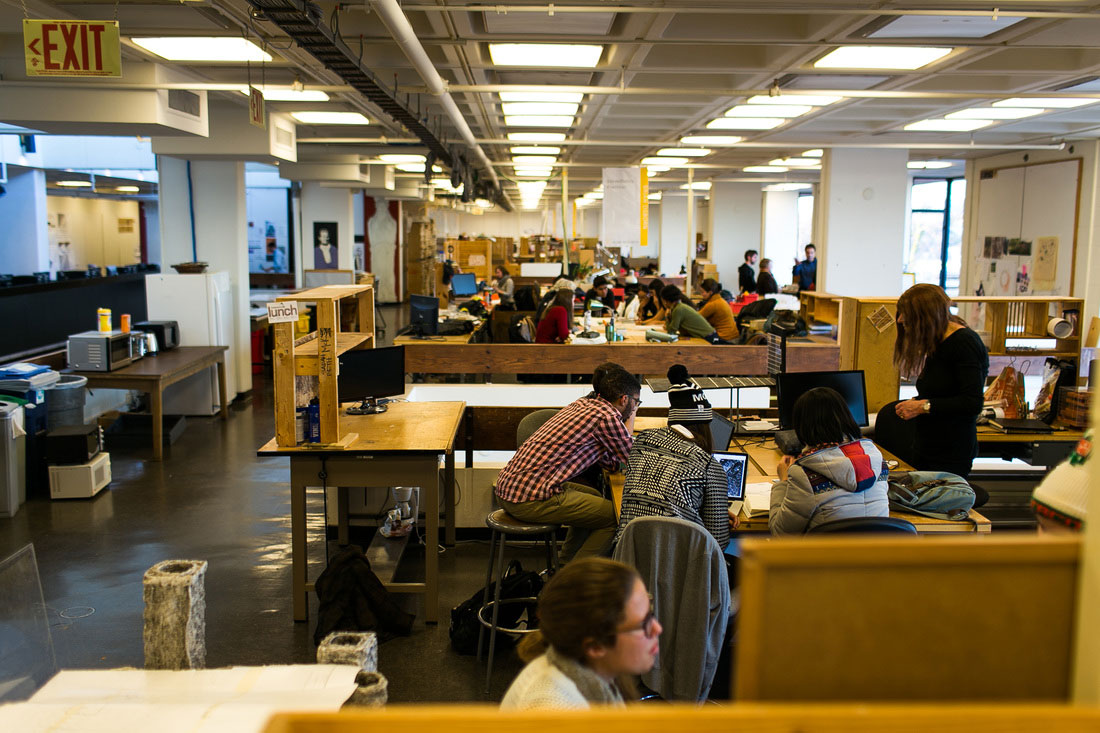
(Photo contributed by Vortex Communications Team)
Media Contact
Article Information
January 29, 2016
/content/architecture-students-turn-their-pencils-and-shovels-preston-avenue

